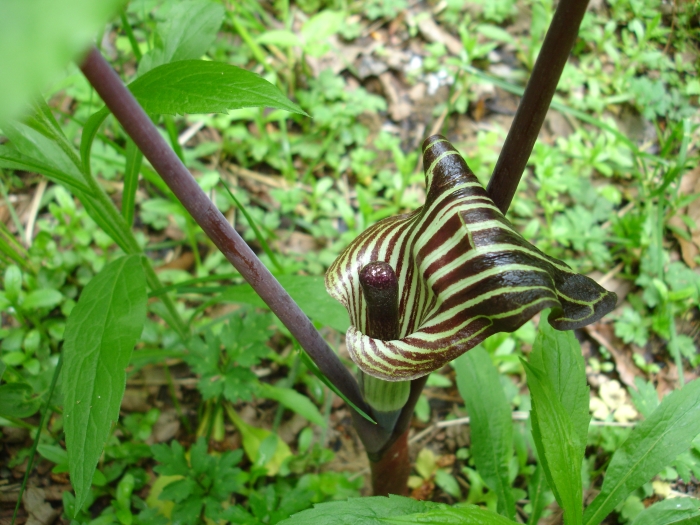Jack-In-The-Pulpit
(Arisaema triphyllum)
Jack-In-The-Pulpit (Arisaema triphyllum)
/
/

IvoShandor
CC BY 2.5















































































Estimated Native Range
Summary
Jack-in-the-pulpit is valued for its distinctive appearance and its ability to thrive in shady, moist conditions, making it a popular choice for woodland gardens and naturalized areas. It is also appreciated for its low maintenance requirements once established. In cultivation, it prefers part to full shade, consistent moisture, and well-draining soil rich in organic matter. While generally disease-free, it can suffer from root rot if the soil is too wet. Gardeners should be aware that all parts of the plant are toxic if ingested raw.CC BY-SA 4.0
Plant Description
- Plant Type: Herb
- Height: 1-2 feet
- Width: 1-1.5 feet
- Growth Rate: Moderate
- Flower Color: Green, Purple, White
- Flowering Season: Summer
- Leaf Retention: Deciduous
Growth Requirements
- Sun: Part Shade, Full Shade
- Water: High
- Drainage: Fast, Medium
Common Uses
Bird Garden, Deer Resistant, Edible*Disclaimer: Easyscape's listed plant edibility is for informational use. Always verify the safety and proper identification of any plant before consumption., Rabbit Resistant, Water Garden
Natural Habitat
Moist woodlands, swamps, and floodplains of eastern North America
Other Names
Common Names: Indian-Turnip, Jack-In-The-Pulpit, Indian Jack-In-The-Pulpit, Indian Turnip, Bog Onion, Brown Dragon, Dreiblättriger Feuerkolben, Petit Prêcheur, Arisème Petit-Prêcheur, Ariséma Rouge-Foncé
Scientific Names: , Arisaema triphyllum, Arisaema quinatum, Arisaema atrorubens, Arum triphyllum, Arisaema pusillum, Arisaema stewardsonii, Arisaema triphyllum var. triphyllum, Arisaema triphyllum subsp. pusillum, Arisaema triphyllum subsp. stewardsonii
GBIF Accepted Name: Arisaema triphyllum (L.) Schott